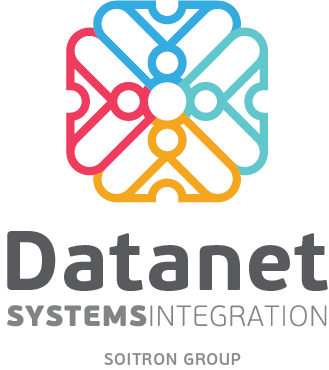
Do you know the most common causes of IT system downfall? Hardware failures (45%) take the first place, followed by power failures (35%), software errors (34%), data corruption (24%), external security breaches (23%) but also accidental errors of users (20%). “Only who does not work does not make mistakes,” says an old Romanian saying, so the risk of “downtime” can only be counterbalanced with an operational continuity solution.
In 2006, a survey made by IBM and the Wall Street Journal showed that 25% of companies that did not have a business continuity solution capable of securing data recovery and running critical applications in less than 48 hours, risked unforeseen activity closure within several months. 40% – within two years, while for 35% there is a danger of disappearing from the market within 5 years.
Ten years after the quoted study, with the data volume doubling every 18 months (according to IDC) and the increase in computerization, this risk is much higher. However, although the imperatives of business continuity are understood by the vast majority of companies, unplanned computer system breaks continue to cause significant damage.
7 hours, average data recovery time
According to the “EMC global data protection index” study (conducted on a sample of 2,200 IT executives with decision-making powers worldwide), 52% of the organizations surveyed had experienced unplanned IT system downtime in the past year, 29% with significant data losses and 14% failed to recover them, although they used solutions to protect them.
The average data volume lost was 2.36 TB, the top marks being recorded by organizations that do not use any data protection solution (4.02 TB), and also by those using such solutions from four or more vendors (5.47 TB). The average damage estimated by EMC specialists is USD 900,000.
With regard to the average duration of unplanned downtime, the study indicates a 22-hour value, with the maximum (37 hours) again being reached by companies using solutions from four or more vendors. The average data recovery time is 7 hours, with only 9% of the interviewed companies managing to do this in less than one hour (22% of them recovered data in 3-6 hours and 21% in 6-12 hours).
Lack of testing, the weak link of continuity solutions
Another relevant conclusion of the EMC study is that only 18% of surveyed companies believe that data protection and data recovery solutions are capable of responding to future business challenges.
The low level of confidence in the backup and restore solutions used, but also the low success rate of data recovery and the long runtime of this operation have a common cause: a large number of companies that use them do not test the efficiency and reliability of solutions under conditions to simulate a major incident. Also, there are organizations that perform only partial tests, replicating a small number of critical files, applications, and/or equipment, obtaining irrelevant results.
“Testing is a common problem with Backup and Business Continuity solutions – companies are implementing a solution, setting a policy of continuity in the event of a major incident, but doing no testing beyond the initial one. Just a few companies still perform periodic testing in conditions that simulate the real ones. The reasons this happens are numerous: organizations are afraid that after such a simulation there is a risk of major malfunctions and they do not allocate time and budgets to test recovery procedures. They avoid such procedures that induce a stress factor across the entire organization and may have direct consequences on employee productivity. “Datanet Systems provides support to its clients in conducting such tests under established contractual conditions,” explains Alexandru Tecuceanu, Data Center Consultant at Datanet Systems.
Solutions tailored to customer requirements
In Datanet Systems’ client portfolio benefitting from such solutions there are financial, banking, telecom, retail, and public sector organizations as well as medium-sized companies. “We have clients for whom the data recovery window takes just a few minutes – like banks and telco operators – but we also have customers for which one or two hour intervals, are in line with their business requirements. In each implementation and development of a Backup and Business Continuity architecture that we perform, we start from the customer’s needs and then perform together an internal analysis to identify the company’s real needs, based on which we can establish indices such as Recovery Time Objective (RTO) and Recovery Point Objective (RPO). There are clients with critical requirements, for which we have created synchronous replication solutions between two or more active sites and can resume work very quickly in the event of an incident or major error. Most companies, however, opt for asynchronous replication solutions, with backups being automatically made at predefined intervals between active and passive production sites, “explains Alexandru Tecuceanu.
Datanet Systems promotes a flexible backup strategy based on the Disc-to-Disc-to-Tape model (backup of primary data is performed periodically on disk storage solutions, depending on the conditions set by the customer, the data being passed automatically on strips). “Our clients include large organizations that have well-established policies and procedures, and medium-sized companies with no competencies in this field, for which we build and develop solutions based on their requirements, taking into account the types of data and applications they want to protect, estimated volumes, available bandwidth, etc. We provide full backup and business continuity solutions and we have the advantage of very good experience in the data center, communications, and networking area that allow us to deliver an end-to-end efficient solution,” concludes the Datanet Systems Specialist.
Datanet Systems provides a complete portfolio of Backup and Business Continuity solutions based on EMC, VEEAM, and Fujitsu tape storage solutions. Choosing a solution to meet real needs and developing procedures to minimize the downtime risks requires advanced technological skills, which makes more than useful calling the services of an experienced integrator.
Learn more about the Datanet Systems portfolio in our dedicated section. For more information please write to us at sales@datanets.ro.
 Cisco reinvents multicloud datacenter...
Cisco reinvents multicloud datacenter...
